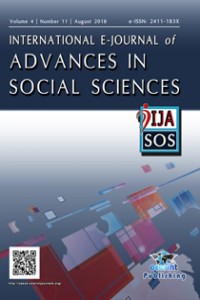Abstract
References
- Din H., Wu S. (2010). Digital Heritage and Culture: Strategy and implementation, edit. World Scientific New York. Holt D.,Cameron D.(2010). Cultural strategy, edit. Oxford Univ. Press, New York. Robles E.(2003). Cultura y Era Tecnológica, Razon y Palabra. Rogerio-Candelera M. A (2014).Science, Technology and Cultural Heritage, edit. Taylor & Francis Group, London UNESCO (2005).Convención sobre la protección y promoción de la diversidad de las expresiones culturales. http://unesdoc.unesco.org/images/0014/001429/142919s.pdf UNESCO (2015). Repensar las políticas culturales. http://en.unesco.org/creativity/sites/creativity/files/gmr_summary_es.pdf Vítores D. F. (2014). El espanol: una lengua viva, edit. Instituto Cervantes, Madrid.
THE INTERACTION OF DIGITAL TECHNOLOGY AND CULTURAL POLICY IN AN INTERNATIONAL ANTAGONISTIC ENVIRONMENT
Abstract
The main objective of this study is to
highlight the upgraded role of digital technology in the policy of each country
participating in the modern international system. New forms of creation have
influenced each country and have revolutionized entire industries such as the
book publishing industry, music and cinema. The new technological environment
has largely reformed the policy making strategies of the countries and has even
influenced the sustainability of governance systems for culture. Technological
inequalities between countries are a clear challenge in order to achieve a
balanced flow of cultural goods and services between them.
Particular emphasis is placed on the role of
the web as an area of creation, access and social participation. The web forms
a space that gives new impetus to safeguarding and promoting freedom of
expression, the right to privacy and the protection of human rights, in
general. The impact of new technologies on the cultural policy of each state,
despite having common features worldwide, maintains local and regional
characteristics depending on variables such as language, legislation and
infrastructure. Countries sharing the same language can be considered to also
share a common "website" which accommodates particular opportunities
and challenges. In this context, we analyze how digital technology can
contribute to a much more effective way of spreading culture.
Finally, in addition to highlighting the impact
of technology advancement on the cultural policy of each country, an important
objective of this study is to emphasize the value of human creativity. Despite
its evolution, digital technology does not substitute the human creation but it
stimulates and opens up new horizons.
References
- Din H., Wu S. (2010). Digital Heritage and Culture: Strategy and implementation, edit. World Scientific New York. Holt D.,Cameron D.(2010). Cultural strategy, edit. Oxford Univ. Press, New York. Robles E.(2003). Cultura y Era Tecnológica, Razon y Palabra. Rogerio-Candelera M. A (2014).Science, Technology and Cultural Heritage, edit. Taylor & Francis Group, London UNESCO (2005).Convención sobre la protección y promoción de la diversidad de las expresiones culturales. http://unesdoc.unesco.org/images/0014/001429/142919s.pdf UNESCO (2015). Repensar las políticas culturales. http://en.unesco.org/creativity/sites/creativity/files/gmr_summary_es.pdf Vítores D. F. (2014). El espanol: una lengua viva, edit. Instituto Cervantes, Madrid.
Details
| Primary Language | English |
|---|---|
| Journal Section | Articles |
| Authors | |
| Publication Date | August 31, 2018 |
| Submission Date | June 3, 2018 |
| Published in Issue | Year 2018Volume: 4 Issue: 11 |
Contact: ijasosjournal@hotmail.com
The IJASOS Journal's site and its metadata are licensed under CC BY
Published and Sponsored by OCERINT International © 2015- 2024


